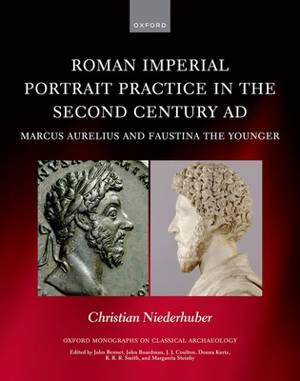
- Afhalen na 1 uur in een winkel met voorraad
- Gratis thuislevering in België vanaf € 30
- Ruim aanbod met 7 miljoen producten
- Afhalen na 1 uur in een winkel met voorraad
- Gratis thuislevering in België vanaf € 30
- Ruim aanbod met 7 miljoen producten
Zoeken
Roman Imperial Portrait Practice in the Second Century AD
Marcus Aurelius and Faustina the Younger
Christian Niederhuber
€ 225,95
+ 451 punten
Omschrijving
It has long been thought that imperial portrait types were officially commissioned to commemorate specific historical moments and that they were made available to both the mint and the marble workshops in Rome, assuming a close correspondence between portraits on coins and in the round. All of this, however, has never been clearly proven, nor has it been disproven by a close systematic examination of the evidence on a broad material basis by those scholars who have questioned it. Through systematic case studies of Faustina the Younger's and Marcus Aurelius' portraits on coins and in sculpture, this book provides new insights into the functioning of the imperial image in Rome in the second century AD that move a difficult, much-discussed subject forward decisively. The new evidence presented here has made it necessary to adjust the established model; more flexibility is needed to describe the processes and practices behind the phenomenon of 'repeated' imperial portraits and how the imperial portrait worked in the mint of Rome and in the metropolitan marble workshops.
Specificaties
Betrokkenen
- Auteur(s):
- Uitgeverij:
Inhoud
- Aantal bladzijden:
- 242
- Taal:
- Engels
- Reeks:
Eigenschappen
- Productcode (EAN):
- 9780192845658
- Verschijningsdatum:
- 14/10/2022
- Uitvoering:
- Hardcover
- Formaat:
- Genaaid
- Afmetingen:
- 234 mm x 267 mm
- Gewicht:
- 975 g

Alleen bij Standaard Boekhandel
+ 451 punten op je klantenkaart van Standaard Boekhandel
Beoordelingen
We publiceren alleen reviews die voldoen aan de voorwaarden voor reviews. Bekijk onze voorwaarden voor reviews.











